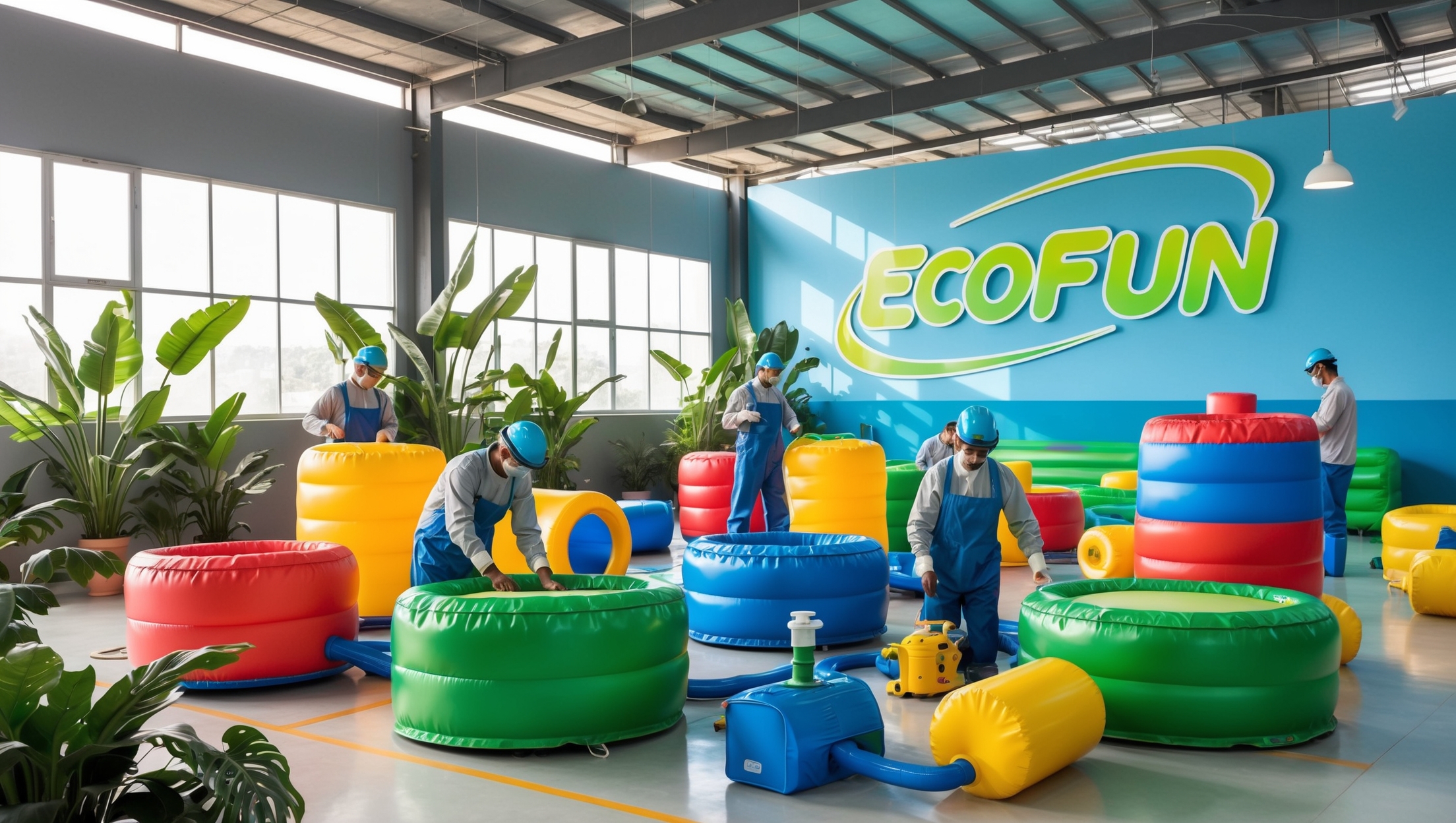
All you want to know about us
Click here to share this article

Bouncy castles, also known as inflatable castles or bounce houses, are iconic staples of parties, events, and amusement parks. These structures are marvels of engineering and design, crafted to provide endless fun while maintaining safety. But what exactly goes into making a bouncy castle? Let’s dive into the materials, design processes, and craftsmanship behind these beloved inflatables.

The Main Material: Durable PVC and Nylon
The core materials used in bouncy castles are PVC (Polyvinyl Chloride) and nylon fabric. These materials are chosen for their durability, flexibility, and ability to hold air pressure effectively.
PVC Fabric
Key Characteristics: PVC is a synthetic plastic polymer that is waterproof, fire-resistant, and extremely tough. It is often coated with a layer of vinyl to make it smooth and resilient.
Why It’s Used: Its resistance to punctures and tears ensures the bouncy castle can withstand rough use, including jumps, slides, and various physical activities.
Thickness and Weight: Typically, PVC used in bouncy castles ranges between 0.4mm to 0.55mm in thickness, depending on the size and design.
Nylon Fabric
Key Characteristics: Nylon is lightweight yet robust, making it ideal for areas that require flexibility and stretch, such as the seams and inner chambers.
Reinforced Nylon: High-strength nylon threads are often woven into a grid-like pattern to enhance durability, preventing rips and elongating the lifespan of the inflatable.
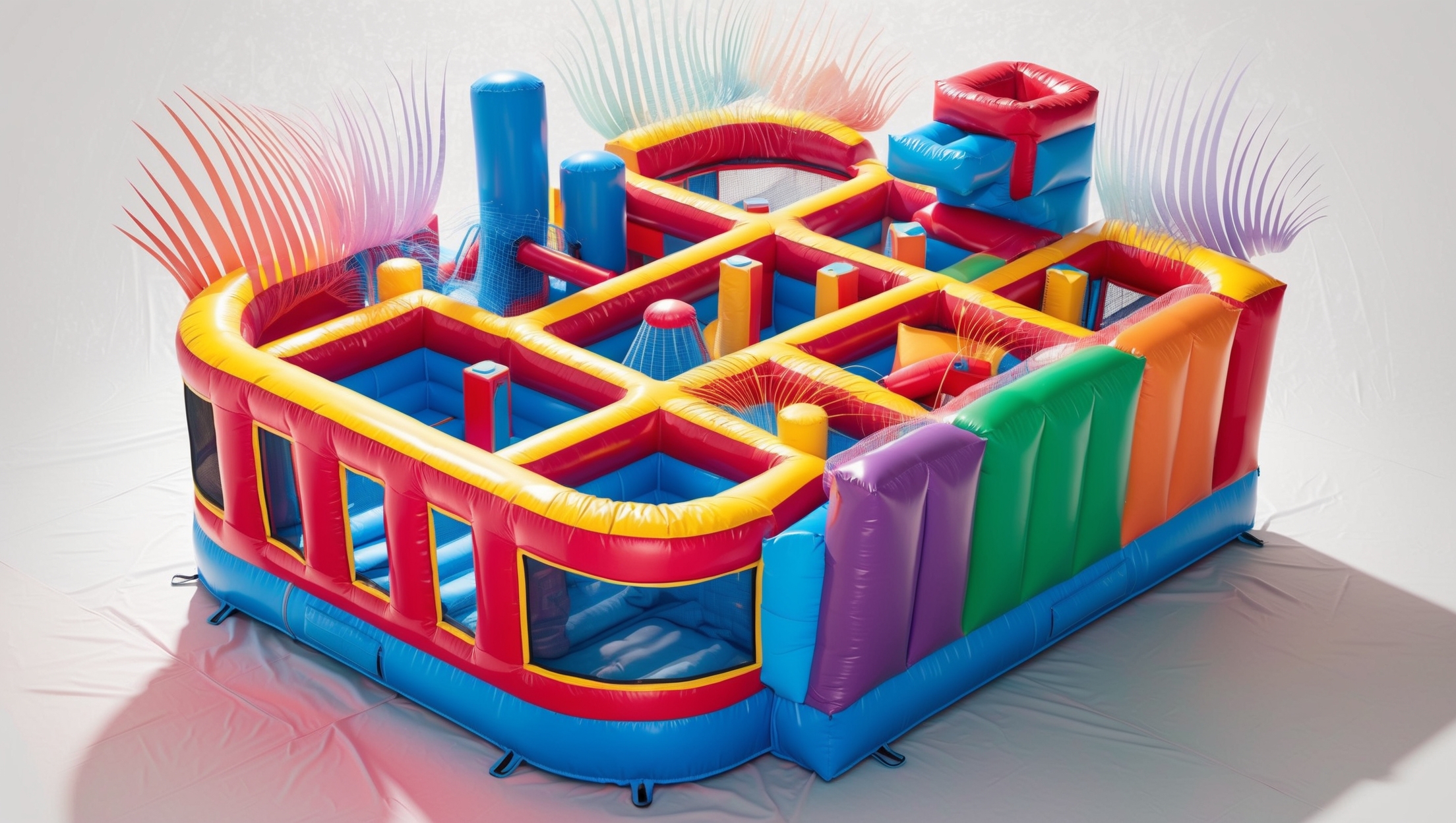
Design Elements: Air Chambers and Reinforced Seams
Bouncy castles are not just large air-filled structures—they are meticulously engineered to distribute air evenly and withstand the weight of multiple users.
Air Chambers
These structures are divided into multiple air chambers, which are inflated to provide stability and bounce.
The chambers are designed to distribute pressure evenly, preventing any one section from sagging or collapsing.
Reinforced Seams
The seams are double-stitched or heat-welded to prevent air leaks and improve durability.
Heat welding: This process involves using high temperatures to bond PVC layers seamlessly, creating a leak-proof and robust finish.
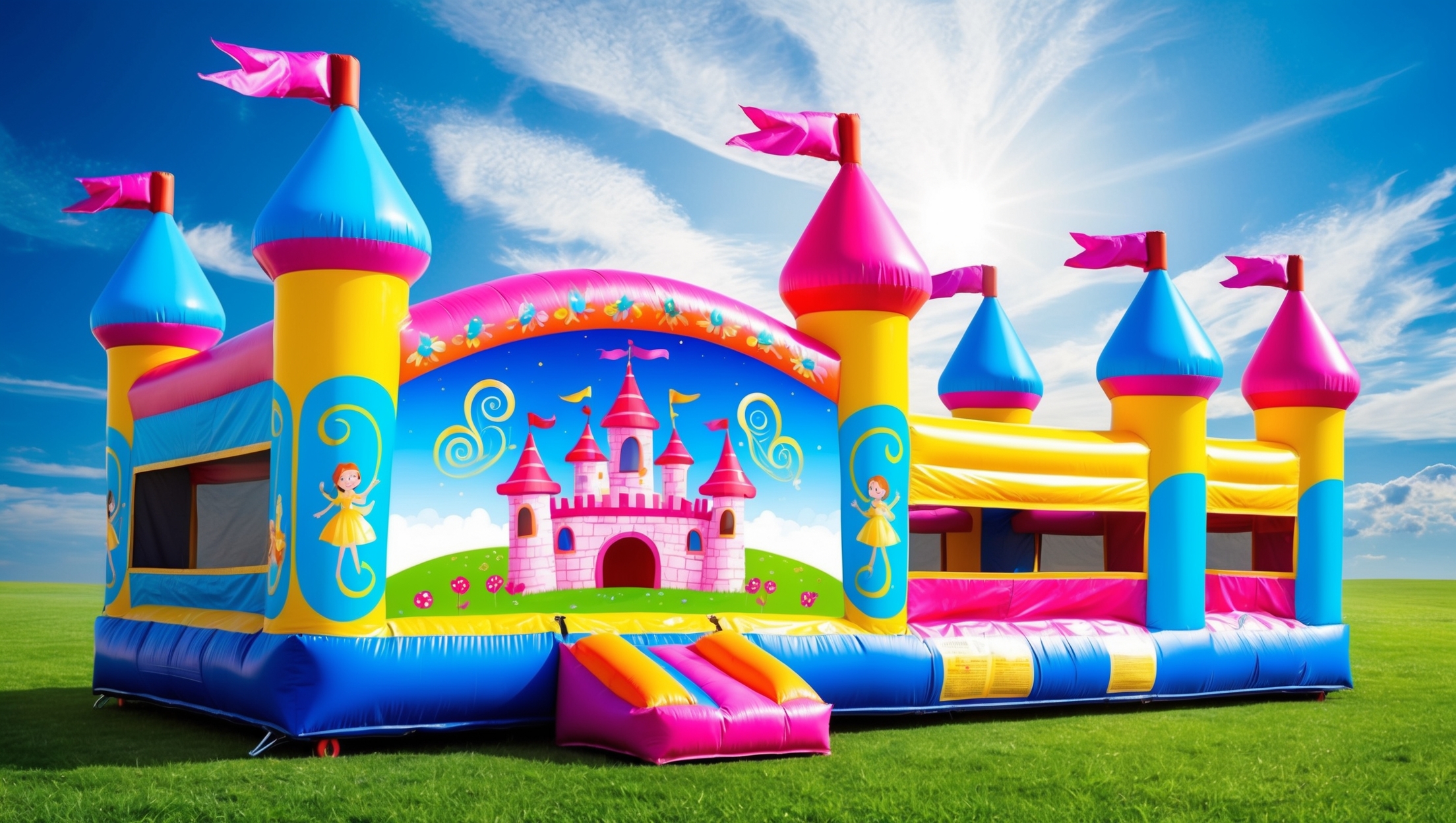
Structural Components: Tubes, Anchors, and Mesh Panels
In addition to the main body, bouncy castles include various components that enhance functionality and safety.
Blower Tubes
Bouncy castles are inflated through blower tubes connected to high-powered air pumps. These tubes are reinforced to handle constant airflow without damage.
Anchor Points
Heavy-duty anchor points made of metal rings or PVC loops are installed at the base of the castle. These ensure that the structure remains firmly grounded during use, even in windy conditions.
Mesh Panels
To ensure visibility and ventilation, mesh panels are incorporated into the sides. These panels are made from high-strength, tear-resistant materials to prevent accidents.
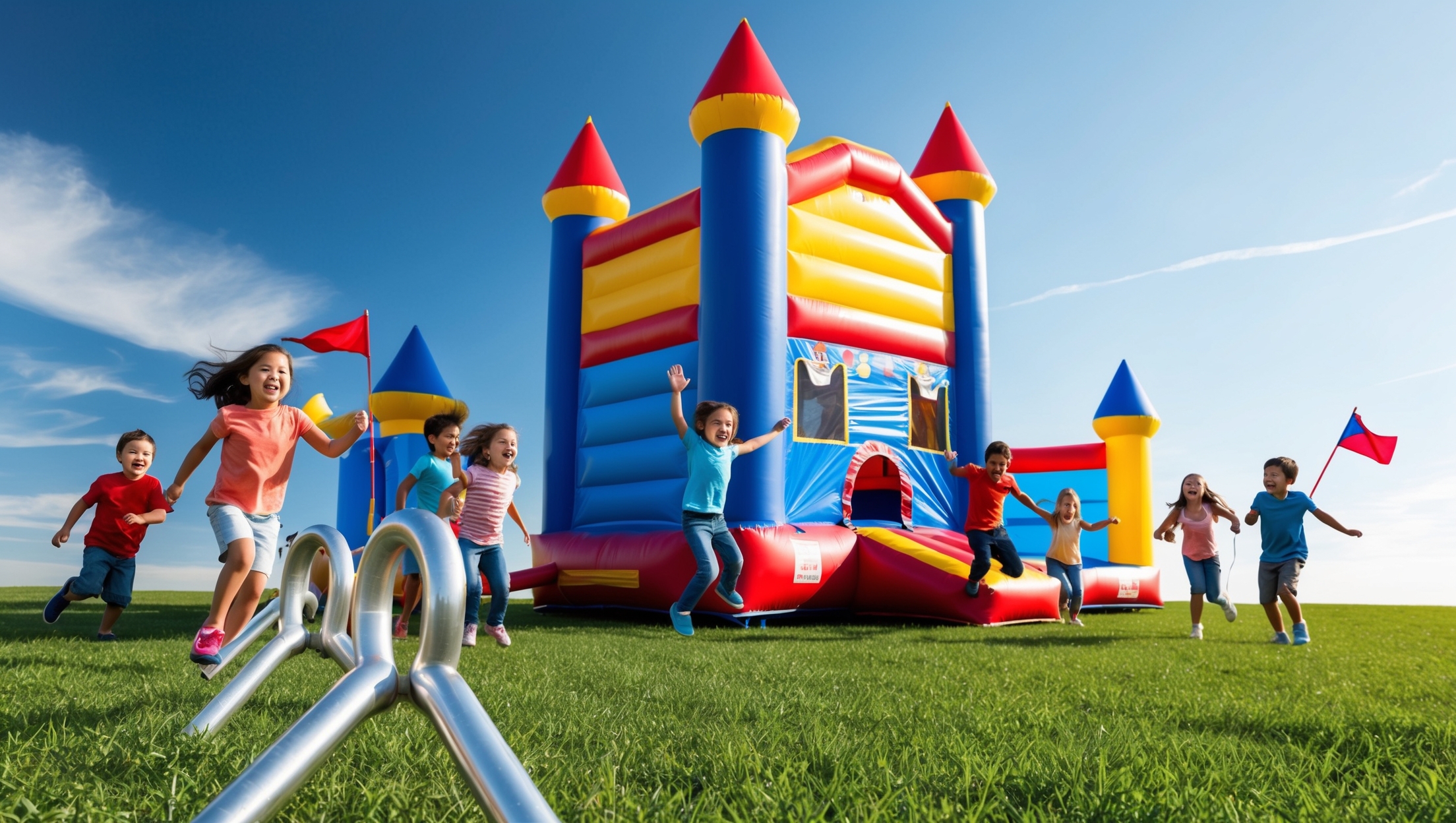
Safety Features: Flame Resistance and Non-Toxic Materials
Safety is a top priority in the manufacturing of bouncy castles. The materials used are rigorously tested to comply with international safety standards.
Flame Retardancy
PVC fabrics used in bouncy castles are treated with flame-retardant chemicals to reduce the risk of fire hazards.
Non-Toxic Components
All materials are made from non-toxic, lead-free substances, ensuring they are safe for children and adults alike.

Custom Designs: Color and Print Technology
One of the most appealing aspects of bouncy castles is their vibrant and eye-catching designs. Advanced printing techniques and color-fast dyes are employed to ensure lasting visual appeal.
Digital Printing
High-definition digital printers are used to create intricate patterns and themes on the surface of the bouncy castle.
UV Protection
To prevent fading, the materials are coated with UV-resistant layers, ensuring the colors remain bright and attractive even after prolonged exposure to sunlight.
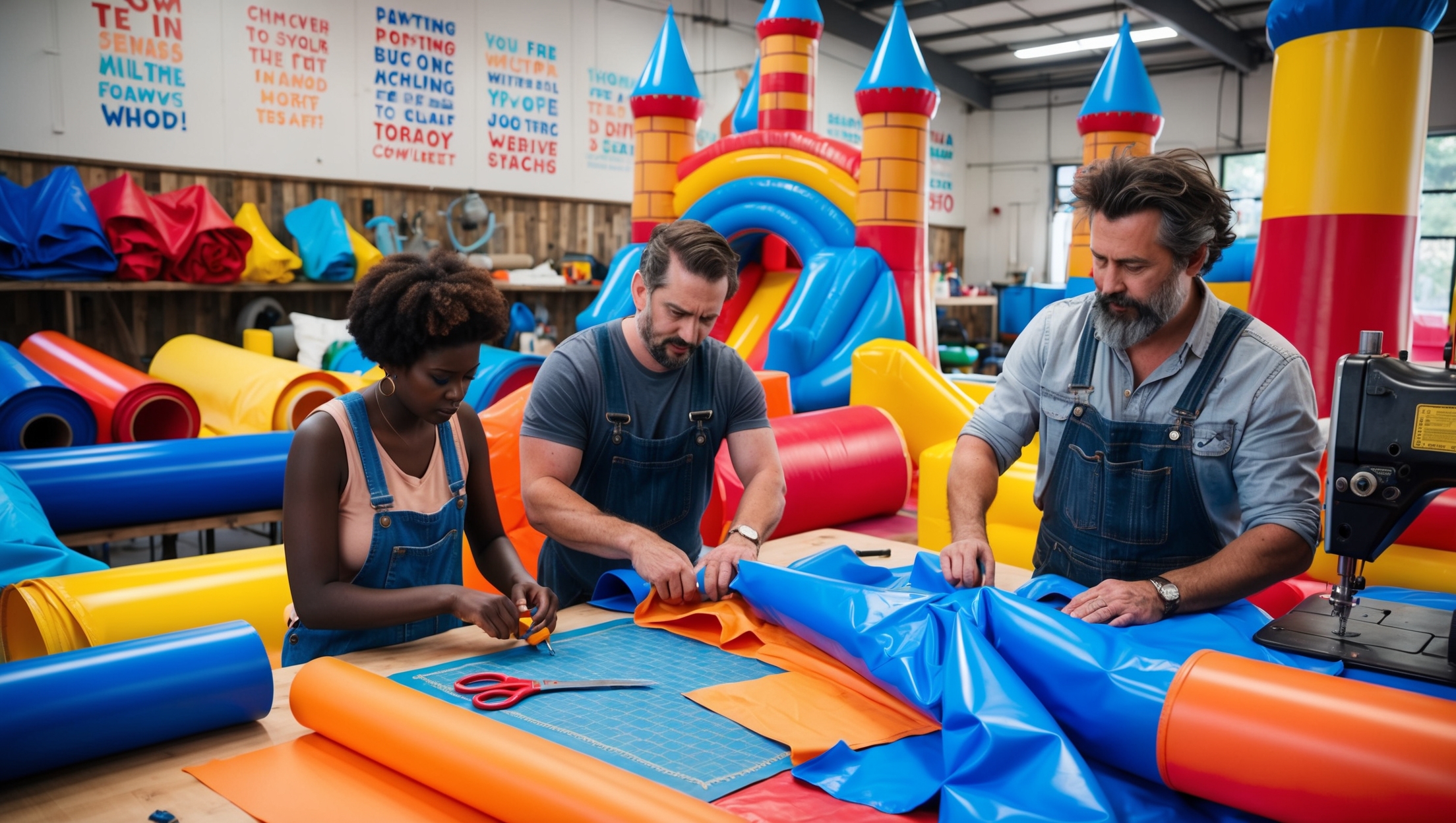
Manufacturing Process: Craftsmanship and Technology
The production of bouncy castles involves a blend of skilled craftsmanship and advanced technology.
Cutting and Shaping
Large sheets of PVC or nylon are precisely cut using automated cutting machines to ensure uniformity and accuracy.
Assembly
The cut pieces are sewn, glued, or heat-welded together to form the final shape. This step requires skilled workers to maintain structural integrity.
Testing
Once assembled, the bouncy castle is inflated and tested for leaks, strength, and overall quality. Manufacturers often perform weight and pressure tests to certify durability.
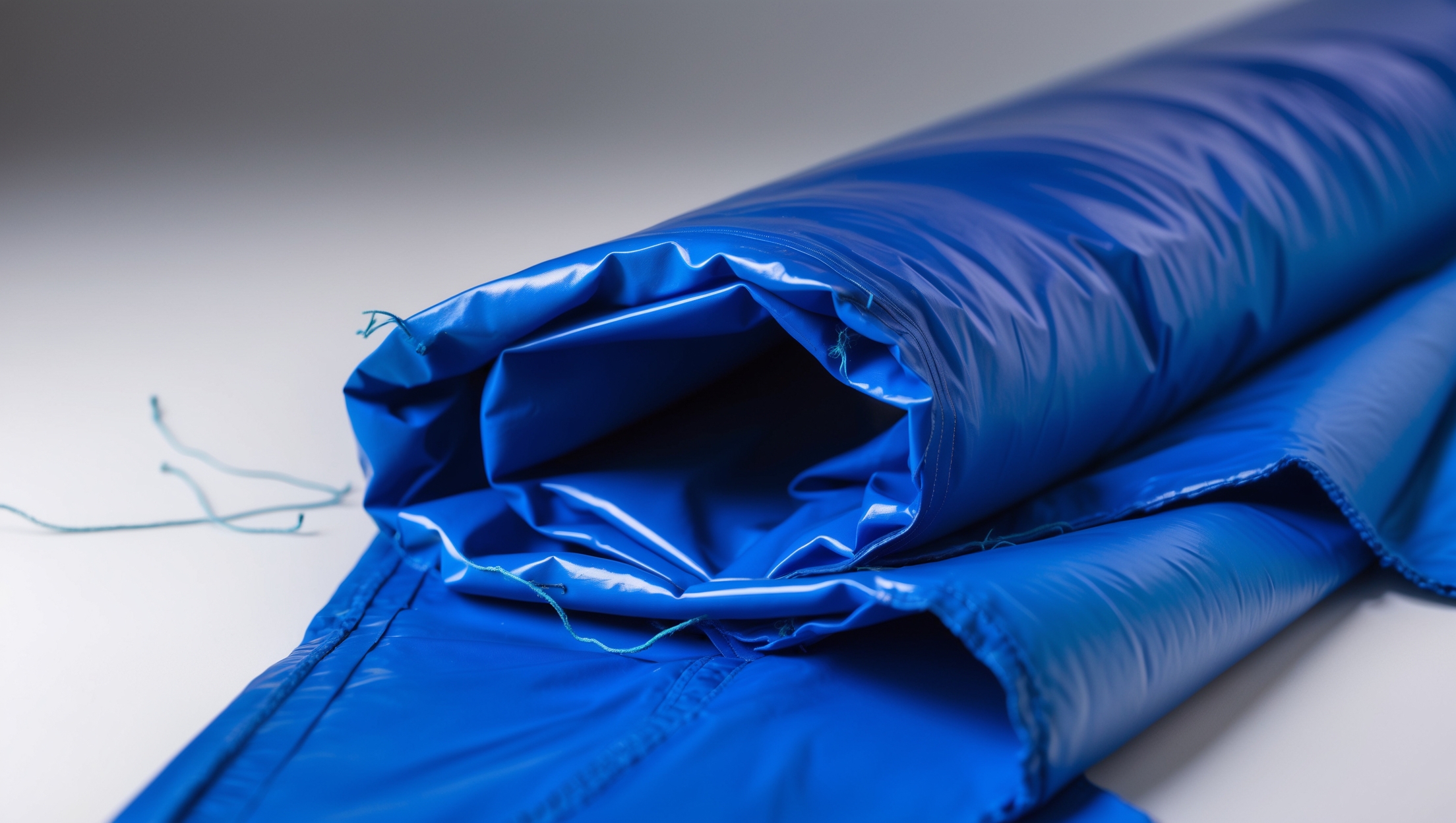
Eco-Friendly Innovations
As environmental concerns grow, manufacturers are adopting sustainable practices to reduce their ecological footprint.
Recyclable Materials
Some manufacturers are using eco-friendly PVC alternatives that can be recycled at the end of the product’s life.
Energy-Efficient Blowers
Modern air pumps are designed to use less electricity, reducing the environmental impact during operation.
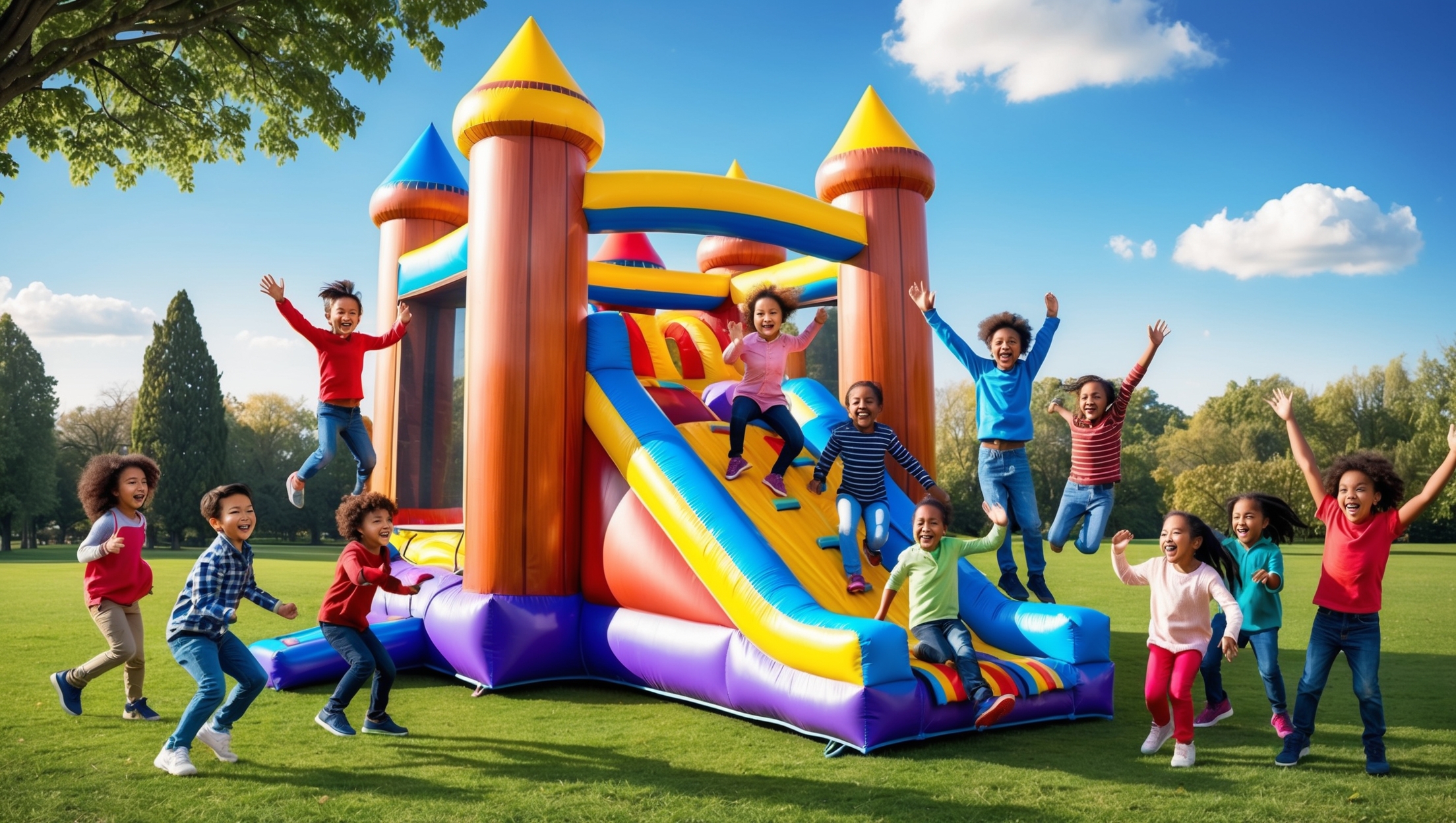
Conclusion
Bouncy castles are more than just fun—they are engineering marvels designed for safety, durability, and enjoyment. Made from high-quality PVC and nylon, reinforced with advanced stitching techniques, and equipped with vibrant designs, these inflatables stand as a testament to innovative craftsmanship. Whether at a backyard party or a large-scale event, the materials and processes behind bouncy castles ensure a safe and exciting experience for everyone.
undefined
undefined
undefined
undefined
undefined
undefined
undefined
undefined
undefined
undefined
By: